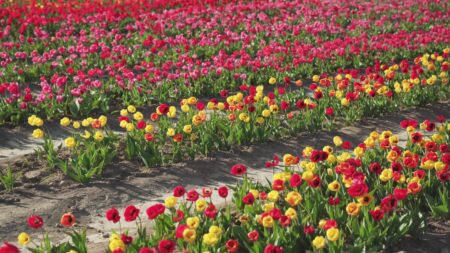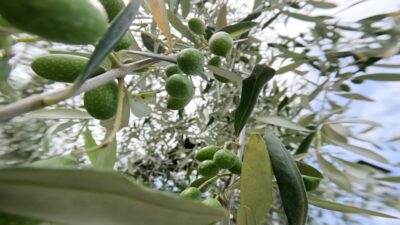Info
- Kmeel di Ivan Khmelyuk
- Rione S. Giacomo 537
- Chioggia 30015 (Venice) Italy
- VAT 04466670272
Contacts
- info@kmeel.com
- Contact us

| Video size | 4K • 3840×2160 • 29Fps • MP4 |
|---|

| Video size | 4K • 3840×2160 • 29Fps • MP4 |
|---|
 Multi-colored flowers planted in row in spring garden
Multi-colored flowers planted in row in spring garden
 Pink and yellow tulips planted in long rows on field
Pink and yellow tulips planted in long rows on field
 Aisles and rows with multi-colored tulips on plantation
Aisles and rows with multi-colored tulips on plantation
 Multi-colored tulips blossom on rural plantation in spring
Multi-colored tulips blossom on rural plantation in spring
 Tulips stagger in wind growing in rows on sunny day
Tulips stagger in wind growing in rows on sunny day
 Double tulips planted in long rows on sunny spring day
Double tulips planted in long rows on sunny spring day
 Colorful tulips wave in light wind growing on plantation
Colorful tulips wave in light wind growing on plantation
 Beautiful tulips wave in gust of wind growing in farm field
Beautiful tulips wave in gust of wind growing in farm field
 Bright yellow tulips with green leaves shake in strong wind
Bright yellow tulips with green leaves shake in strong wind
 Flower rows and ground aisles on rural plantation in spring
Flower rows and ground aisles on rural plantation in spring
 Pink tulips wave in strong wind growing in rural field
Pink tulips wave in strong wind growing in rural field
 The Ephemeral Beauty of Tulips: A Symbol of Grace and Elegance
The Ephemeral Beauty of Tulips: A Symbol of Grace and Elegance
 Long rows of multi-colored tulips and ground aisles on farm
Long rows of multi-colored tulips and ground aisles on farm
 Motion along tulips of different colors growing in long rows
Motion along tulips of different colors growing in long rows
 Bright pink tulips with lush green leaves planted in row
Bright pink tulips with lush green leaves planted in row
 Tulips flowerbeds growing in long rows along narrow aisles
Tulips flowerbeds growing in long rows along narrow aisles
 Tulips flowerbeds growing in long rows along narrow aisles
Tulips flowerbeds growing in long rows along narrow aisles
 Bright pink tulips planted in rows in field on sunny day
Bright pink tulips planted in rows in field on sunny day












White tulips, with their ethereal elegance and delicate fragrance, stand as one of the most beloved and fascinating flowers in the plant kingdom. Symbolizing purity, innocence, and simplicity, these flowers captivate the imagination of gardeners and flower enthusiasts worldwide. In this comprehensive guide, we will explore the fascinating world of white tulips, from their intriguing history to the nurturing cultivation they require to blossom in all their splendor.
History of White Tulips
White tulips have a long history dating back centuries. Originating from Central Asia, these elegant flowers have captured the hearts of people all around the world. In the language of flowers, the white tulip represents hope and innocence and is often used on special occasions such as weddings and anniversaries to symbolize pure and sincere love.
Choosing the Right Variety of White Tulips
When deciding to cultivate white tulips, it is essential to choose the right varieties for your garden. There are several varieties of white tulips, each with its unique characteristics. Some varieties boast large and showy flowers, while others feature a delicate fragrance and graceful posture. It is important to consider the plant’s height and the desired blooming period to plan a garden of white tulips that will harmoniously flourish.
Optimal Growing Conditions
White tulips thrive under specific conditions. These flowers prefer well-draining and fertile soil. Avoiding waterlogging is crucial, as tulip bulbs can rot in overly moist soil. Planting tulips in an area of the garden that receives at least six hours of direct sunlight per day will ensure abundant blooms and vibrant colors.
Planting and Care
Planting white tulip bulbs is an exciting process that leads to a magnificent display of spring blossoms. Bulbs should be planted in the fall, at a depth of about three times the size of the bulb itself. Adding compost to the soil during planting will enrich the soil and provide essential nutrients for plant growth.
During the growing period, it is important to keep the soil moist but not waterlogged. A drip irrigation system can be an excellent choice to ensure consistent moisture without water stagnation. After blooming, avoid cutting the leaves until they have completely yellowed, as these leaves help nourish the bulb for the next year’s flowering.
Protection from Pests and Diseases
White tulips can be susceptible to various pests and diseases, including aphids, snails, and molds. Carefully monitor the plants for any signs of infestations and intervene promptly if necessary. Using natural insecticides and eco-friendly gardening practices can help protect tulips without harming the surrounding environment.
The Timeless Beauty of White Tulips through Our Videos:
If you wish to explore the ethereal beauty of white tulips in more detail, our royalty-free videos offer an engaging visual experience. We capture the delicacy of these flowers authentically, from the morning dewdrops on the petals to the sunlight filtering through the blooms, providing a breathtaking visual journey.
Invitation to Embrace the Elegance:
Immerse yourself in the enchanting world of white tulips with our high-quality royalty-free video. This captivating footage can be downloaded immediately after purchase, allowing you to incorporate the timeless beauty of white tulips into your creative projects. Whether you are working on a nature documentary, a garden enthusiasts’ blog, or an artistic visual presentation, our videos offer a plethora of creative possibilities.
Indulge in the elegance of white tulips and let their timeless charm inspire your creativity.
Purchase our royalty-free video today and witness the enchanting allure of these pristine blooms come to life.